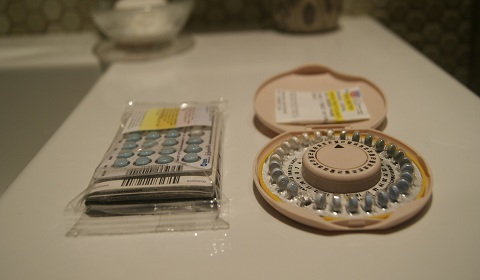
Recent medical studies suggest that third and fourth generation hormones, which are now widely used in many birth control products, are linked to increasing occurrences of deep vein thrombosis (DVT), otherwise known as blood clots, that are commonly found in the leg or pelvic region. When a DVT dislodges and travels to the lungs, it results in pulmonary embolism, leading to venous thromboembolism (VTE), a condition that can cause serious health issues and even death. With thousands of medical reports of fatal or near-death experiences associated with contraceptives, investigations are beginning to uncover why patients are often not warned of the health risks.
One third generation progestin that has been used in contraceptives such as NuvaRing and OrthoEvra (the patch) is known as Desogestrel. Drug companies endorse third generation progestins like Desogestrel in lower doses of hormones than those in previous birth control products. The hope with this low dosage is that the products will work effectively while reducing side effects that patients experienced with higher levels of hormones. The side effects that third and fourth generation progestins are aimed to reduce include acne, weight gain and migraines. However, many studies have shown that these third generation progestins are creating even larger health problems.
Since the Food and Drug Administration (FDA) approved NuvaRing in 2001, at least 300 serious health events including strokes and even deaths have been reported in women who use the drug. Similarly, between 2002 and 2006, at least 40 women died of blood clots while using the OrthoEvra patch manufactured by Johnson & Johnson (J&J). In 2006, the FDA ordered J&J to mark their packaging of the OrthoEvra patch with a “black box” warning, which caused sales of the drug to dwindle.
According to a recent Vanity Fair article, women who use vaginal rings like NuvaRing have a 90% greater risk of developing a potentially fatal VTE than women who use birth control pills with other forms of progestin. A recent study published by the Journal of Thrombosis and Haemostasis concluded that the use of oral contraceptives containing third generation Desogestrel causes disturbances of the procoagulant, anticoagulant and fibrinolytic pathways of blood coagulation (the process in which liquid blood is changed into a blood clot), which contributes to the increased risk of VTE. Many other studies similar to this one mention that the reliability and morality of pharmaceutical manufacturing companies should be called into question.
According to health and physical education instructor Tinka Brown, a drug company’s primary motive is profit.
“Sometimes health concerns are overlooked or heads are turned the other way, sad to say, to make a profit,” Brown said.
In 2009, Merck, one of the largest pharmaceutical companies in the world, purchased Schering-Plough, a New York-based pharmaceutical company whose sales were soaring due to its production of NuvaRing. Although 100 cases had already been filed against Schering-Plough concerning the dangers of new-generation hormones, drug representatives working at the company were instructed to “minimize” the risks of NuvaRing when talking to doctors about the product. This helped increase Merck’s NuvaRing sales by $623 million in 2012 alone.
Lauren Streicher, M.D., Associate Clinical Professor of Obstetrics and Gynecology at Northwestern University’s Feinberg School of Medicine, founder of Gynecologic Specialists of Northwestern and regularly featured guest on The Dr. Oz Show believes that, although the birth control pill is the most well-known risk factor for getting a blood clot, it is by no means the most common. In a blog she wrote for The OZ Blog, Streicher wrote that VTE is responsible for over 50,000 deaths in the United States each year.
“It’s true that women on hormonal contraception containing estrogen may be at increased risk for developing a potentially fatal DVT, but any excess estrogen increases risk…In any circumstance, blood clots in young women are very rare events,” Streicher said.
Streicher continued to explain that women who are already at risk have a greater chance of getting a blood clot if on certain contraceptive drugs, such as the pill. According to Streicher, other risk factors include a genetic predisposition, prolonged immobilization, smoking and obesity.
On the topic of alternate risk factors, Brown said, “many women are not honest with their physicians about their health or lifestyle habits, such as smoking.”
Brown also believes, however, that women’s health issues and concerns have not been on the minds of decision makers in Congress as much as they should be.
“Issues of birth control have had a pattern of taking a ‘back seat’ and have not been a priority. This needs to change,” Brown said.






















